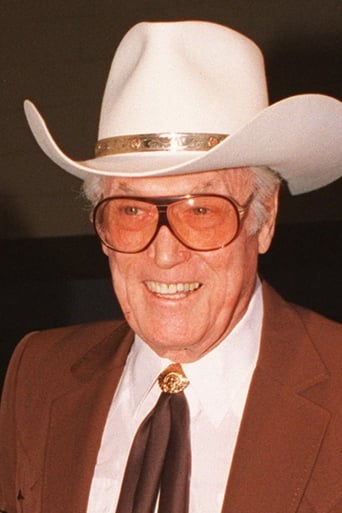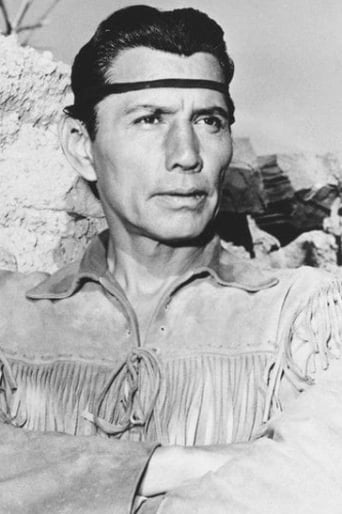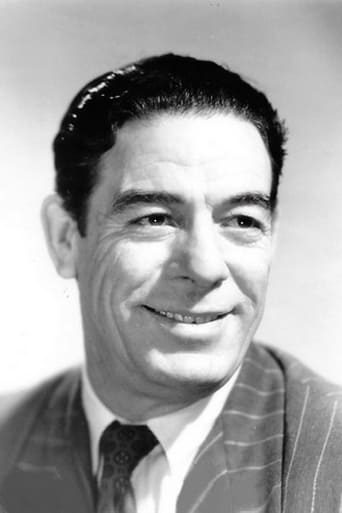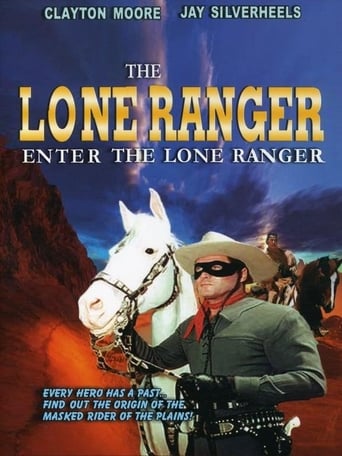
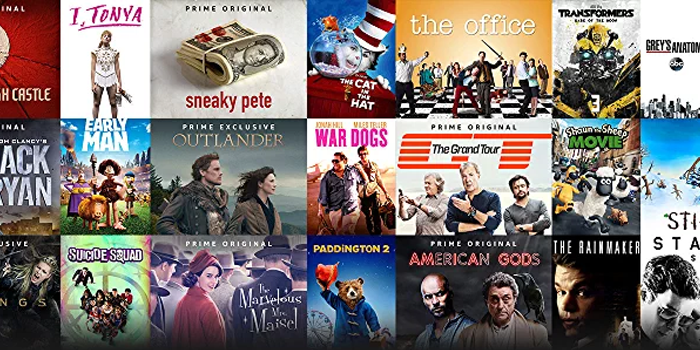
Enter the Lone Ranger (1949)
The sole surviving Texas Ranger of a murderous ambush - John Reid, becomes the great masked hero. He fights for justice with his companion, Tonto.
Watch Trailer
Cast


Reviews
Thanks for the memories!
I don't have all the words right now but this film is a work of art.
Captivating movie !
The movie's neither hopeful in contrived ways, nor hopeless in different contrived ways. Somehow it manages to be wonderful
"Enter the Lone Ranger" constituted the first episode of the Jack Chertok, Harry Pope, and George W. Trendle produced television series that aired from 1949 to 1957. Regular "Lone Ranger" scribe George B. Seitz Jr. derived his teleplay from on a story written by Fran Styker with Lone Ranger creator George W. Trendle. Basically, this episode served as an origins episode. Not only did it introduce the Lone Ranger as a character but also it dictated the ground rules of the series. Unlike the 1981 and 2013 films, our hero was never shown from the beginning. The Texas Rangers are trailing notorious outlaw Butch Cavendish (Glenn Strange of "House of Dracula"), and they ride unsuspectingly into a cross-fire, and riflemen in a mountain gap riddle them with bullets. We are never introduced to John Reid (Clayton Moore of "Black Dragons") before the massacre, and his identity is kept concealed until he dons the mask. The treacherous guide Collins (George J. Lewis of "Captain America) takes the Rangers into an ambush. Everybody but Collins dies. Butch orders Collins to check the corpses. Collins assures Butch that everybody is deceased. No sooner has Collins confirmed that they are all deed than Cavendish shoots Collins and leaves him for dead. Later, an buckskin-clad Native American, Tonto (Jay Silverheels) shows up and buries all the dead Texas Ranger except one. This Texas Ranger recovers from his wounds, and Tonto reminds him that they were old friends. John Reid extended a helping hand to Tonto after the Indian's village was massacred. Tonto gave him a ring so he would recognize him. After the last Ranger recuperates, he puts on the mask and vows to work for justice. He refuses to kill anybody, and he prefers to let the court determine the fate of the criminals that he brings to justice. A gunfight between the Lone Ranger and Collins ensues at the end, and Collins appears to have an edge on our hero because he is about to smash him with a huge rock. You'll have to wait for the resumption of this in episode two. Altogether, "Enter the Lone Ranger" was very serviceable.
Prior to the ambush, I was trying to figure out which of the rangers was Clayton Moore. (How can you not recognize that gravelly low baritone?) But I didn't recognize any of the voices (or faces). I was also wondering why Tonto rides Scout with a saddle. And he wears buckskins, an odd costume for an Apache.However poor Tonto's English might be, it's better than the speech of the radio Tonto -- who was probably created (like Jimmy Olsen) to give TLR someone to talk with. His pidgin English wouldn't be so annoying if he used subject pronouns rather than object pronouns. By the way, Jay Silverheels (what a wonderful name!) was actually Harold J Smith. (Really!) His stage name came from a nickname received when he played lacrosse.There are several origin stories, and the most-common -- in which Tonto is a friend from earlier years (in this case, Reid having saved Tonto's life) -- is used here. I've often wondered if this was an attempt (probably unconscious) to obscure the issue of the Tonto's and Reid's private relationship. (Friends are rarely intimate.) However, it's telling that, when the younger Tonto and Reid part, the former gives the latter a ring, which he puts on Reid's ring finger -- the /right/ one, "fortunately". But it's a symbolic marriage, nevertheless.The script is amateurish, more-appropriate for an imageless radio show. (Later shows are more complex and polished, but still sometimes include unneeded dialog intended to tell the radio listener what's going on.) Cavendish's murder of the Rangers is drawn-out and verges on the sadistic. In later episodes, beatings, knifings, and killings are only rarely directly shown.
This episode explains the origins of the Lone Ranger and the basis for the series. Without this episode, the entire series makes little sense. The Lone Ranger is more than just a crime fighter. He is a symbol, a living metaphor, for a set of values that place him on a higher plane. Moreover, the story is told in a straightforward and unambiguous manner, making it eminently easy to watch and enjoy. The acting is great and Clayton Moore and Jay Silverheels are perfect for the parts. An important component is the musical track which is beautiful and powerful and perfectly compliments the story. What is surprising is that although this is the opening episode of a television series, this episode is actually a full-length movie with a strong story, a wide array of characters and sets, and impressive cinematography. This is not a cheaply made production. Also notable in the cast is Glenn Strange who plays the Ranger's main antagonist. This opening episode of the Lone Ranger saga is a great example of the western movie genre and is something that is definitely worth watching.
This episode "Enter The Lone Ranger" is a vital episode to watch as it explains why the Lone Ranger is on a mission to bring about law and order to the Western states of America. It also clarifies why he wears a mask and a white hat. The brave Indian, Tonto, is introduced in this episode and it mentions a very interesting link between the two heroes back when they were young. Although the style of acting is dated and in black and white format it is an episode that a dad or mum could sit down and watch with the family (with, of course, a running commentary from them about how they enjoyed this series as a child and how it would be a great series for their children to watch too).


